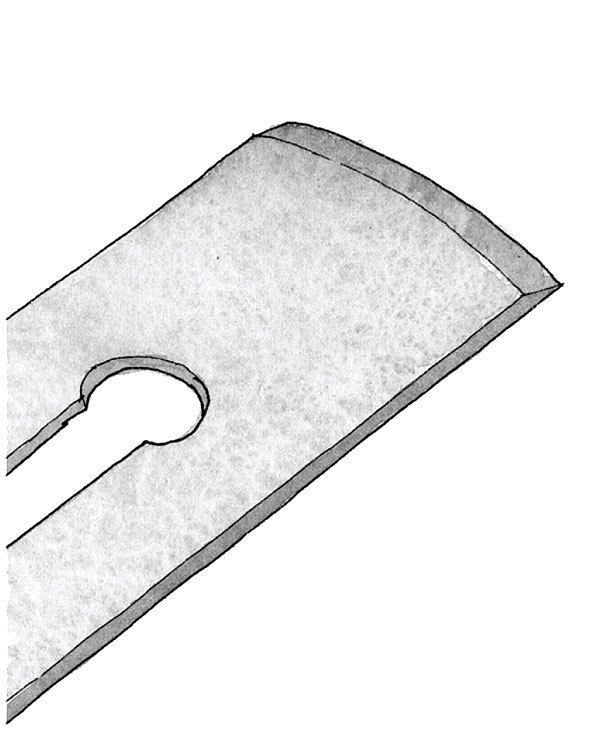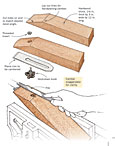Tip for Cambering a Jack-Plane Blade
Use a shopmade guide to put the correct camber on a plane blade.

With handplanes, cambering refers to the formation of an arched surface on the cutting edge of the iron so the corner of the iron will be less likely to gouge the wood. The degree of camber for a smoothing plane is slight (0.002 in.) and easily achieved on your stones. But a jack plane has a more extreme camber (0.005 in.) for heavy stock removal, and a scrub plane’s camber is even more severe. For those planes, I use this jig and a file to form the camber.
To make the jig, cut a 25° (or your preferred angle) bevel on one end of a hardwood block. Now, locate and bore a hole for a threaded insert for the hold-down knob. With a scribe or fine pencil, draw a centerline on the bevel and transfer the degree of camber onto the hardwood. Working from the outside with a plane, remove wood to the layout line of the primary camber. Plane away material from the center, then use a scraper, a fine rasp, and sandpaper to smooth the curve. Finally, install the threaded insert and hold-down knob. To use the guide, attach the plane iron parallel to the sides of the jig. File the primary bevel, starting from the outside and working toward the middle. Keep the file in light contact with, and parallel to, the guide. File until the plane iron’s camber and bevel are the same as the guide’s. I hone the iron by hand using the scary-sharp method based on a piece of plate glass and successively finer grits of wet/dry abrasive paper, rolling the iron to follow the curve.
Drawings by Jim Richey
Fine Woodworking Recommended Products

Veritas Micro-Adjust Wheel Marking Gauge

Stanley Powerlock 16-ft. tape measure

Tite-Mark Marking Gauge









Log in or create an account to post a comment.
Sign up Log in